WHAT’S HOT IN POTS & PANS
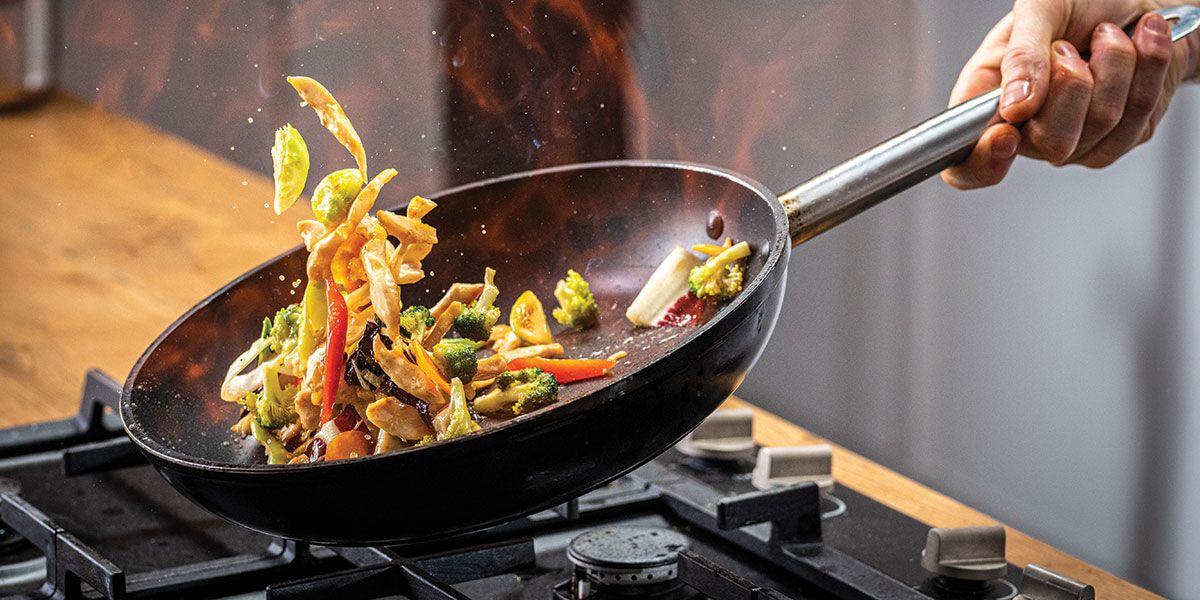
Why You Might Want to Invest in an Upgrade
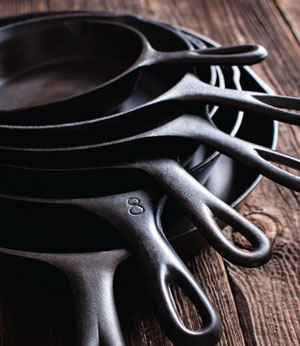 We often procrastinate upgrading cookware because this chore feels like a bore. I remember many a wedding shower, mustering up half-hearted enthusiasm when watching brides unpackage pots and pans. Yet the hallmark of adulthood is when you realize you’ve reached the point at which you can feel genuine excitement while selecting cookware.
We often procrastinate upgrading cookware because this chore feels like a bore. I remember many a wedding shower, mustering up half-hearted enthusiasm when watching brides unpackage pots and pans. Yet the hallmark of adulthood is when you realize you’ve reached the point at which you can feel genuine excitement while selecting cookware.
In the world of pots and pans, there are several ways to invest in quality, as well as ensure the safety and health of your family and guests. So let’s get to it.
Questions before the hunt
Start with a few guiding questions.
- Are you a casual chef or is cooking your passion?
- Do you plan on making fancy and elaborate dishes or will you stick to the basics aside from special occasions?
- What is the overall aesthetic and feel of your kitchen? Is it an entertainment hub for gathering or an off-the-beaten path demolition site for messy creations?
- How much storage do you have? Do you want a variety of sizes or will bare-bones basics get the job done?
- What are your specifications in terms of eco-friendliness and health standards?
- How long will you reasonably hang onto this culinary set?
- Would you prefer a timeless staple that is classic and neutral or a fun statement choice in a signature color?
- What’s your budget?
- Perhaps one of the most important considerations is stove type: Is your stove cooktop a glass top, induction, gas or electric? Are the eyes of the stove smooth, coiled, or grated?
Material consideration
CAST IRON is a timeless option that remains nonstick if properly cared for. Cast iron, along with carbon steel are known for retaining their flavor throughout countless cooking processes.
CERAMIC is naturally nonstick, chemical free and easily washed with water and soap.
STAINLESS STEEL is known for its effective and evenly distributed heating qualities. However, it will be more likely to accrue tougher stains and lose its aesthetic luster over time.
The naturally chemical-free materials like cast iron and ceramics are options that haven’t gone out of style! However, if going with more modern materials, experts caution customers on avoiding chemicals like lead, cadmium (a heavy metal) and PFAS (per- and polyfluoroalkyl), which don’t break down in the body or environment. PFOA (perfluorooctanoic acid) or PTFE (Polytetrafluoroethylene) can cause toxic fumes that could lead to fever, throat and breathing issues, along with other health disturbances.
To play it safe in terms of health and eco-friendly products, do your research and make sure your chosen cookware gives you peace of mind when it comes to preparing and disposing of food. To research the cookware you have in mind, check out consumerreports.org, visit the manufacturer’s website or contact the company’s customer service department to inquire. When in doubt, go with a more timeless option.
Trending cookware brands like GreenPan and Our Place, advertise that they are free of toxic chemicals. Popular for their form and function, these choices add both a pragmatic and stylish aesthetic touch to the stovetop. These brands feature both timeless neutral colors like blacks, beiges and silvers as well as trending colors such as rose hues, sage greens and jewel tone blues.
Sometimes as our attitudes, families, houses and awareness levels shift, so do our needs. If thoughts of cookware can make you feel even the slightest surge of exuberance, then congrats! You’re officially a grown up. If not? Don’t worry. We’re not judging if you never reach this level of enthusiasm. Either way, hopefully this article gives you a starting point for checking a task off the to-do list.
Happy cooking!
Cast Iron Care
Cast iron remains a timeless material due to its flavoring ability, as well as its versatility. Used for cooking, baking, searing and roasting, cast iron shows durability when used both on the stovetop and in the oven. This material is also unfussy, requiring specific, yet simple care tips.
STEP 1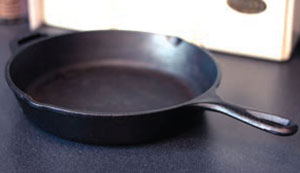
Do your research to make sure the pan or skillet you order doesn’t have extra special specifications. Some come pre-seasoned. If not, you’ll need to go to the manufacturer’s website or watch a video tutorial on how to season it yourself. A well-seasoned skillet is what prevents sticking.
STEP 2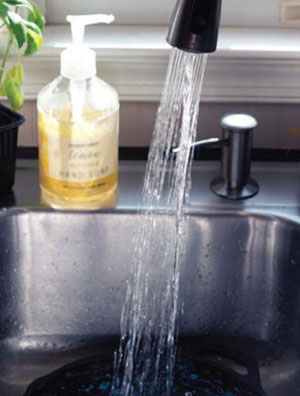
Washing can get a bit controversial. Staunch cast iron purists out there will turn their nose up to the use of soap. Other fans of cast iron recommend light soaping in order to get rid of stuck food. Either way, soak the skillet in warm water. Add a bit of soap only if you wish or when dealing with extra grime.
STEP 3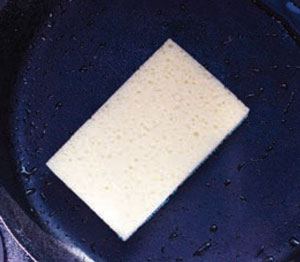
Use a firm but gentle dish sponge to scrub the surface. Anything more aggressive, like a scrub made out of metal, could be too corrosive.
STEP 4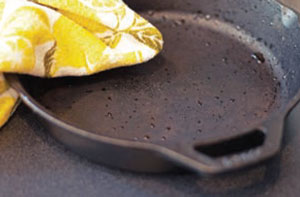
Dry completely with a towel.
STEP 5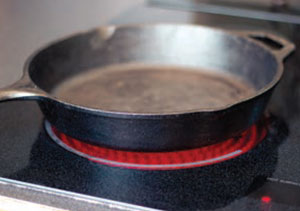
Heat for a few minutes on the stovetop to make sure that every drop is dry. The goal is to avoid any rusting.
STEP 6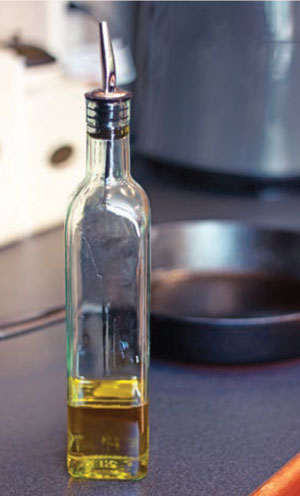
After turning off the burner, immediately cover the whole surface of the hot skillet with a thin coating of neutral-tasting oil such as grapeseed or flaxseed oil. The combination of heat and oil create a protective nonstick coating.
STEP 7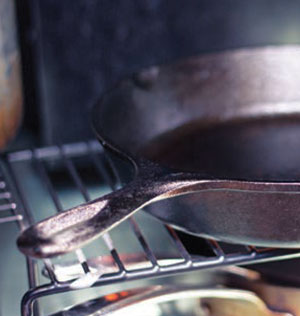
Once cool, store in a place free of humidity and moisture. ✦
Cast Iron, ceramic, Cookware, eco-friendly products, heavy metal, PFAS, PFOA, pots & pans, PTFE, Stainless steel


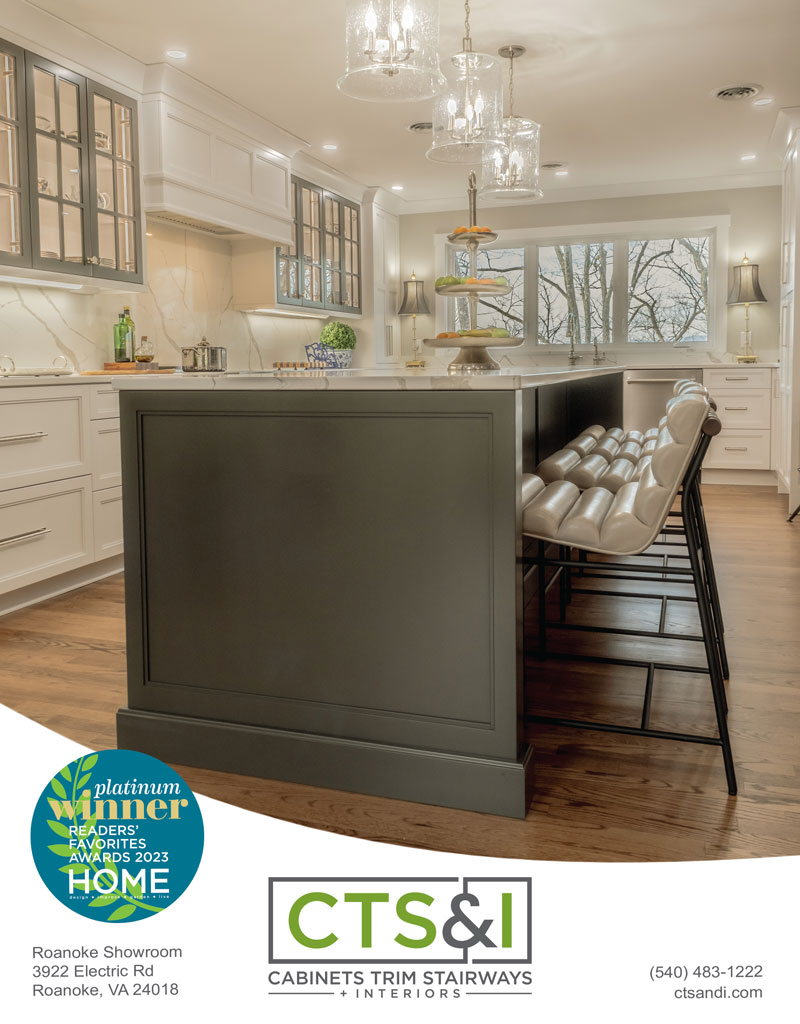






Billy Burger
Thanks for this know how teach all lesson. Definitely ready to put it to the test! Time for some burgers on the old cast iron skillzet at the Burger household tonight!